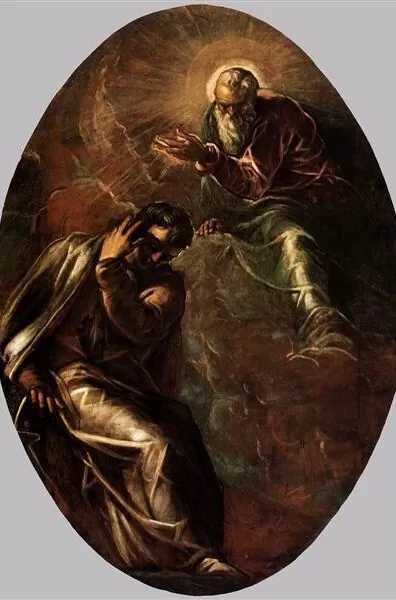Prepare for God Incarnate this Advent season! Below is the first of three blog posts on the Incarnation. Read the second installment by clicking the link below, and check back for the third installment to be published during the fourth week of Advent!
The Incarnation: O Come, Divine Messiah
The Incarnation and God's Face
“'But,’ he said, ‘you cannot see my face, for no one may see me and live.’” (Ex. 33:20)
Thus does God speak immediately before revealing Himself to Moses (Ex 33:22b). This is a common refrain in the Old Testament: to see God, God’s face, is to die (e.g. Ex 20:19, Judg 13:22).

It is easy to see the significance of this; seeing our loved ones face-to-face is a primary desire in our relationships. It is the primary way we recognize people and know their thoughts and moods. We keep pictures of our loved ones so that we might have their likeness when they are absent; particularly an image of their face. However, this is precisely what God denies to Moses, and with good reason; the people recognize that this vision of God is too powerful in this life. The vision itself causes death.
Yet, another refrain shows up in the Old Testament. Psalm 80 thrice repeats: “Restore us, O Lord God of hosts; let your face shine, that we may be saved.” (Ps 80:19) The Grail Psalter, that we Dominicans pray in the Office every day, renders this more personally: “Lord, let your face shine on us, and we shall be saved.” While presumably fearing the power and glory of that face in this life, the Psalmist also recognizes that, if only that face would turn our way, salvation must come. If, somehow, we receive the strength to look God in the face, we shall receive salvation.
“Philip said to him, ‘Lord, show us the Father, and we will be satisfied.’ Jesus said to him, ‘Have I been with you all this time, Philip, and you still do not know me? Whoever has seen me has seen the Father.’” (Jn 14:8-9a)
This is exactly what happens in the Incarnation; the little baby born in Bethlehem is not just a human baby, but is, in fact, God the Son. His adorable little face, peering up from the manger, is God’s face. And we can look on it with love and wonder, without fear of perishing, knowing that to see Him is to see the Father.

This, of course, is only the beginning of our Christian lives. We know that Jesus left the world to prepare a place for us. We thus have a place prepared, a journey to complete. Our Christian life does not end with the human face of Jesus, but begins there. It is the preparation for, one day, beholding God face to face in the fullest sense. Beholding the God that, in the old dispensation, was too much; it necessarily brought death. Now, however, we receive the life of the Spirit that strengthens us for that final vision.
This is part of the glory of the Incarnation, the mystery for which we especially prepare this season. Let us remember this Advent that the coming of Jesus’s human face is the beginning and the way to the Father, world without end.
[All Scriptural quotations taken from the NRSV, unless otherwise noted.]

Br. Kevin Peter Cantu, O.P. | Meet the Brothers in Formation HERE
